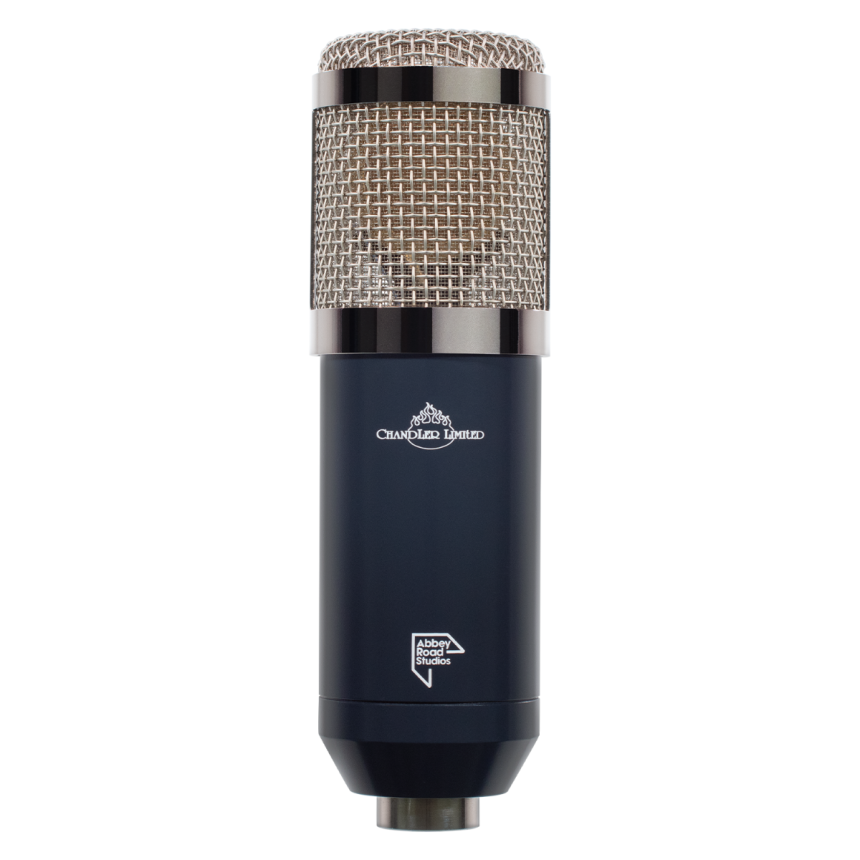Chandler Limited TG Microphone Type L
Solid-state Large-diaphragm Condenser Mic with Cardioid Polar Pattern, Dual Tone System, and 10dB Pad
The original Chandler Limited TG Microphone has found huge success in studios worldwide. Now, the TG Microphone Type L carries on the rich legacy of EMI Abbey Road Studios with an affordable workhorse mic designed to ace any sound-capture task. Like its predecessor, the TG Type L is a solid-state large-diaphragm FET condenser microphone with Chandler’s innovative Dual Tone System that modifies the input stage to optimize the response for various recording scenarios. However, the TG Type L is cardioid-only and incorporates unique voicings to accommodate a broader array of sources. Delivering a vibrant, larger-than-life sound and immense tonal versatility, the Chandler Limited TG Microphone Type L is a valuable professional tool that deserves a place in your mic locker.
Dual Tone System delivers unprecedented sonic flexibility
The Dual Tone System modifies the TG Type L Microphone’s input stage, extending the mic’s versatility to accommodate a wide range of sources. As compared with the original TG mic, the Type L’s Dual Tone System voicings are tuned quite differently. System A delivers a classic, mid-forward, harmonically rich sound that’s ideal for more aggressive rock tracks. Silky smooth and ribbon-like, the System B voicing provides pristine clarity and the ability to withstand extreme SPLs without clipping. Thanks to its remarkable sonic flexibility, the Type L is your go-to mic for vocal and instrument deployments in which large-diaphragm condensers and ribbon mics have traditionally been used. You may even find the TG Type L to be an excellent replacement for the typical dynamic and ribbon mic combination on guitar cabinets.
Carrying on the rich “TG” legacy
If you’re wondering about the origin of the “TG” product designation, then allow Sweetwater to illuminate. The story begins in 1958. EMI London, as Abbey Road Studios was then known, had a staff of innovative recording and technical engineers and racks of the best gear available at the time; much of it either heavily modified — or designed from scratch — by EMI technicians. The Beatles, of course, were the most famous beneficiaries of EMI’s technical prowess. Their early records were recorded on EMI REDD .37 valve consoles built by EMI Central Research Laboratories in the late 1950s, while the updated REDD .51 handled their mid-’60s output — including Sgt. Pepper’s Lonely Hearts Club Band.
The introduction of 8-track recording and the increasing sonic experimentation of a new generation of artists demanded new technology; thus, a new EMI-designed desk made its debut in 1968. With 24 mic inputs, eight buses, four echo sends, two cue sends, and — for the first time ever — a compressor/limiter (in addition to EQ) on every channel, the TG12345 console was substantially larger and more capable than the REDD desks, and driven by transistors rather than tubes, its sound was dramatically richer and more highly detailed. The “TG” prefix was a nod to EMI’s corporate predecessor, “The Gramophone” company. The TG12345 was put to the test in Studio Two the following year on the Beatles’ Abbey Road album.
The groundbreaking sound quality of the solid-state EMI TG12345 recording and mastering consoles left its mark on legendary albums by the rock royalty of the era. Four generations of the TG12345 served Abbey Road clients (the studio had changed its name in honor of the Beatles album) through the 1970s, recording countless hit records and film scores before being retired from service in 1983.
Chandler Limited TG Type L Large-diaphragm Condenser Microphone Features:
- Solid-state large-diaphragm FET condenser mic
- Vibrant, larger-than-life sound
- Onboard Dual Tone System for amazing tonal versatility
- System A voicing: harmonically rich, TG mid-forward
- System B voicing: pristine and ribbon-like, handles extreme SPLs
- Custom-spec transducer, gold-sputtered membrane
- Cardioid polar pattern
- Switchable 10dB pad
- Power requirements: 48V phantom
- Includes swivel hard-mount and bamboo storage case







